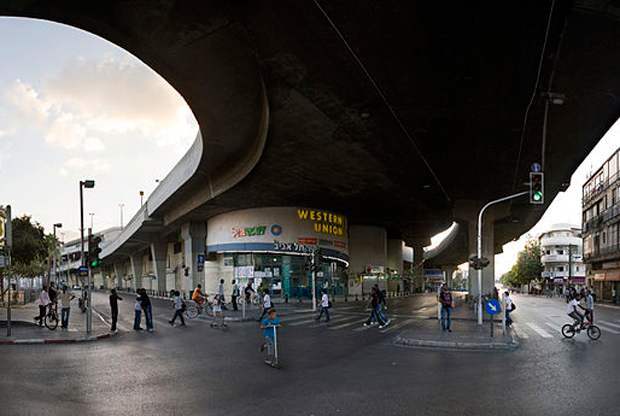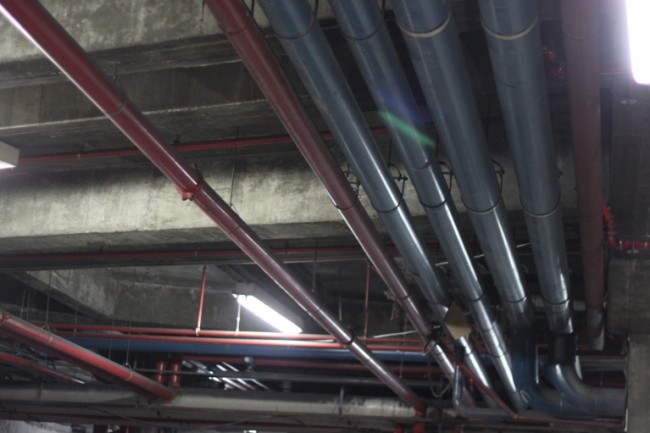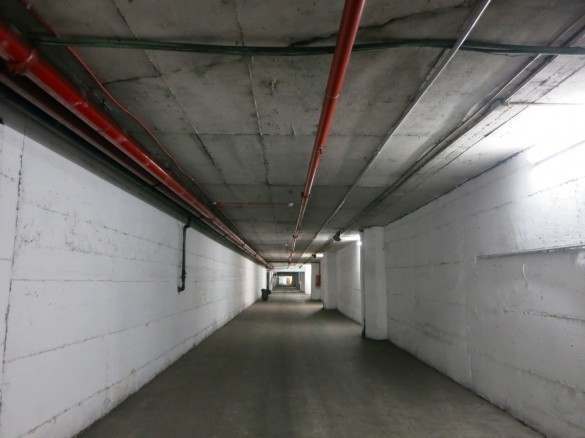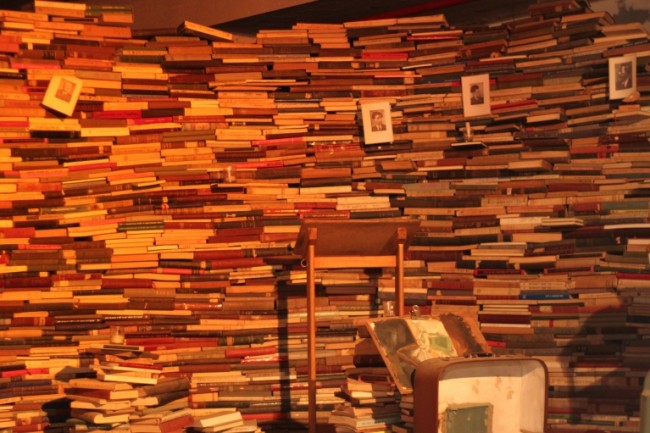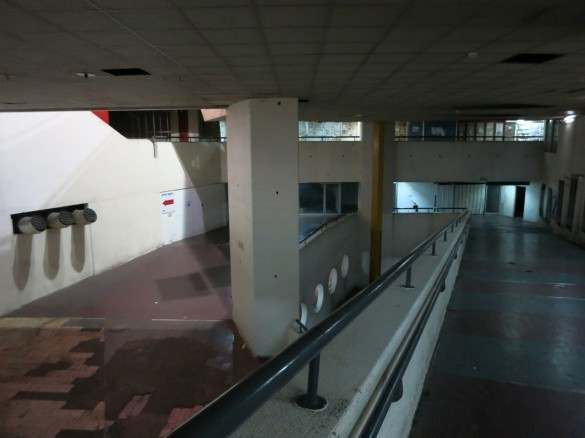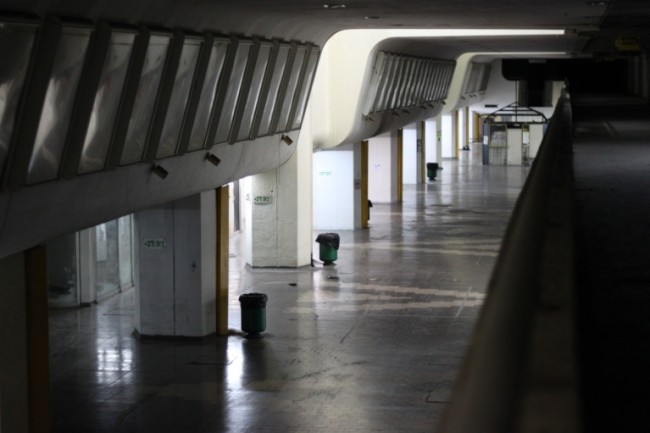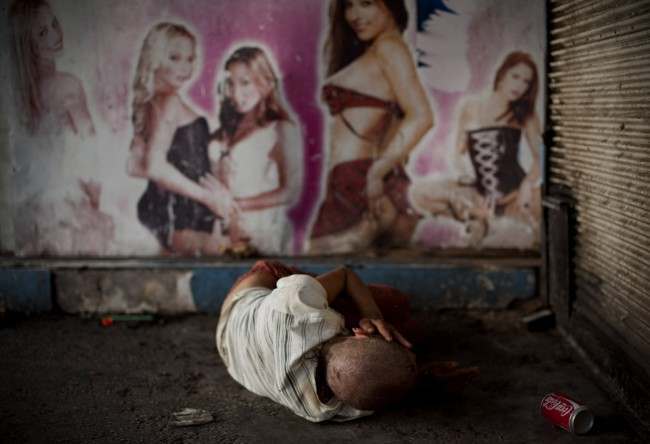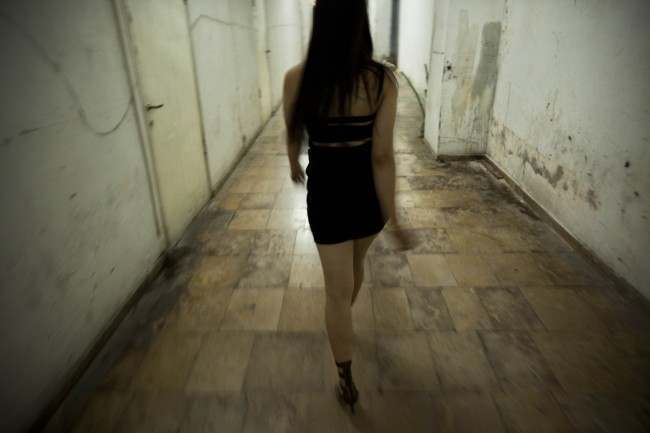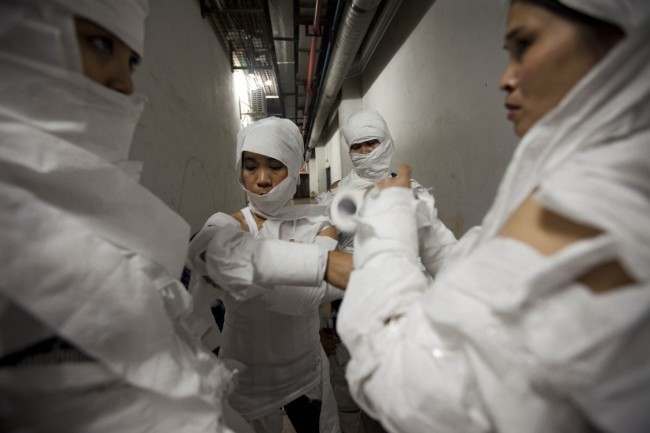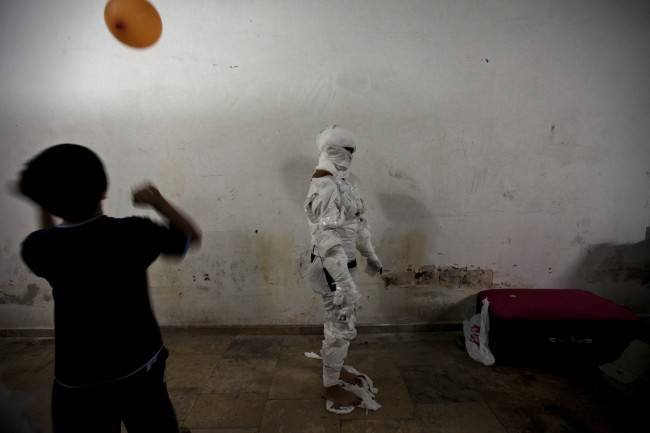Tel Aviv’s New Central Bus Station: A Photo Tour Into Seven Circles Of Hellish Design
TEL Aviv’s bus station – the New Central Bus Station (HaTachana HaMerkazit HaChadasha) – was once the world’s biggest bus terminal.From the date of its opening on August 18, 1993 until 2010, when it was out-sized by Delhi’s Millennium Park Bus Depot, the seven-floor, complicated, user-unfriendly complex was number 1.
Simone Wilson wrote that the monstrosity is “home to an abandoned arcade, six underground movie theaters, a bunker that can withstand nuclear holocaust and an unfinished bus tunnel so overtaken by bats that it has been declared a nature preserve”.
Let’s look around.
Tour guide Yonatan Mishal says the pipes in the basement contain water and gasoline meant to keep the building self-sufficient in the event of a war.
Come friendly bombs.
* The atomic bomb shelter in the basement of the Tel Aviv central bus station features a consecutive row of blast walls.
* At first, the station was exciting and inviting. Passengers went to the first level for their buses around Tel Aviv. They shopped for clothes or shoes at brightly-lit shops. Businesses rushed to buy up space in the building, and eleven theaters were slated to open.
But the city under the roof soon began to resemble Detroit. Outside, sidewalks were shadowed by soaring concrete bridges that ferried buses to the station. The hold on construction, which lasted nearly twenty years, had eroded the neighborhood; any Israelis who could afford to left the area. Foreign workers from the Philippines and later, penniless migrants from Sudan and Eritrea moved into the neighborhood.
Inside, the Dan bus company moved its terminals from the bottom floor to the top in 2002. Without the departures hall on the first floor, the cinema plus the stores on the second and third floors were all doomed. Today, the top half remains a functioning station, while the bottom floors are outmoded except for what Horn described as a “nuclear Holocaust bomb shelter”—a room that can accommodate 15,000 people, and was used during the 1991 Gulf War, years before the station opened.
The dimly-lit Yiddish museum-library in the bus station.
* Historian and architect Zvi Elhyani doesn’t like the thought of razing buildings barring absolute necessity, but he says he’d make an exception for the Central Bus Station. “It should be wiped off the face of the earth, the streets which it erased should be rebuilt. The Central Bus Station is an environmental hazard. If they’d chosen the right spot and created good architecture, that would be one thing, but in this case even the architecture is bad.”
A bookseller at a Russian language bookshop in the bus station.
* Tel Aviv’s “new” central bus station is one of the largest in the world. According to the Tel Aviv city government, the station encompasses more than 750,000 square feet of floor space on seven levels, taking up a 144,000-square-foot chunk of Tel Aviv’s troubled southern district. Planning for the station originally started in the 1960s, but construction was only completed in 1993, according to the city.
Venturing inside for the first time can be overwhelming. Shops, merchant carts and, of course, an endless stream of bus passengers, are stuffed into every corner of the extensive structure. Clashing colors play off of oddly angled walls and disconnected stairways, making the building’s interior look like something M.C. Escher might have dreamed up if he had lived in the 1990s and frequented Middle Eastern bazaars.
A statue of Charlie Chaplin (holding the hand of a statue of what appears to be Chaplin as a child) watches over the abandoned six-theater movie theater complex in the bus station.
The station’s super-creepy second story is the stuff of Stephen King. By the light of a smartphone, we shuffled through rooms full of gorgeous old pinball machines, torn-down signs (advertising such vintage joys as direct buses from Tel Aviv to Cairo) and piles of dusty stilettos from abandoned shoe stores. But they had nothing on story No. one-and-a-half — “Yes, they want you to get lost,” confirmed Mishal — where a series of six movie theaters, collectively called “The Six Fantastics,” have gone unused for 20 years. What’s left of the lobby is kitschy Old Hollywood, made even kitschier by the fact that the occasional wild-eyed cat comes screeching out from behind a waterless fountain or fake plant. A central statue of Charlie Chaplin — which, to be honest, looks a lot more like Hitler in the dark — watches over the place, holding the hand of another small statue of Chaplin as a child. Death-of-cinema symbolism doesn’t get much more tragic than this.
Today, however, shelter-seekers would be haunted by the faint chirping of thousands of bats on the other side of the wall — because there is now a full-blown, 200-meter bat cave stretching to the east. These spooky little dudes started squatting here when construction was halted on an underground bus tunnel some years ago. They’ve called it home ever since, and have thrown such a pretty little nature party that Israeli authorities recently deemed the tunnel a nature preserve.
In 2009, migrant workers from the Philippines community staged a beauty contest at the central bus station.
In this photo taken Saturday June 13, 2009, contestants wrap themselves up in toilet paper, ahead of a performance during the semi final beauty contest.
Whatever you do, do not touch anything.
You can take the Central Bus Station Tour with Heela Harel.
More Galleries
Posted: 4th, November 2013 | In: In Pictures, The Consumer Comment | TrackBack | Permalink


